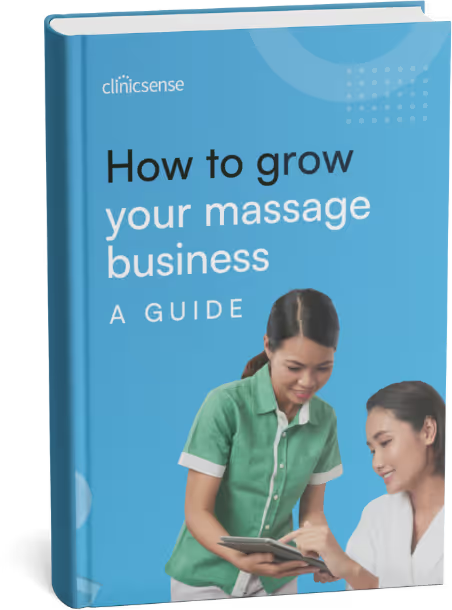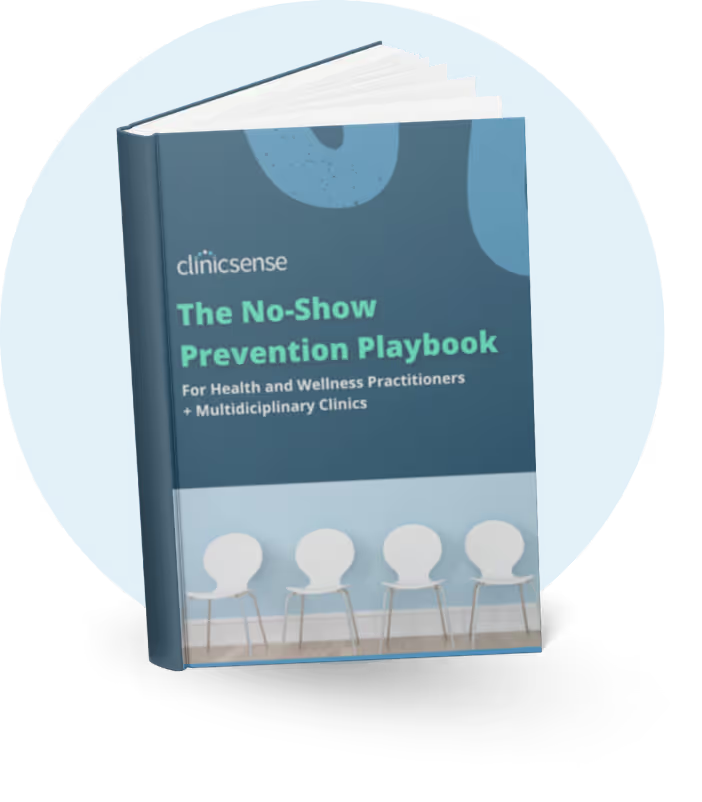Massage Therapy Business Tips
July 20, 2023

Learning new massage modalities can help you grow as a therapist and earn more money. Unfortunately, continuing education isn’t free, and your time is limited. It’s important to invest in the right modality for you. This article will give you an overview of different massage modalities and guide you towards choosing one that aligns with your goals as a massage therapist.
When choosing a massage modality, think of your goals, and who you enjoy helping - athletes, seniors, or stressed office workers? Consider the work environment too. Be mindful of your physical strengths and emotional well-being. Don't forget to do a little homework on what’s in demand locally.
When making goals for your career, think about whether you want to be a jack of all trades or a specialist. You can learn a variety of massage modalities with the goal of offering different services. Alternatively, you can choose a massage specialty by mastering a single modality.

Even though Swedish massage is the most commonly taught massage modality in massage school, it still qualifies as a speciality. Specializing in Swedish massage can allow you to master the art of a deeply relaxing and therapeutic massage.
Swedish massage is a popular form of bodywork that involves long, flowing strokes, kneading, and gentle stretching. It aims to relieve muscle tension, improve circulation, and promote relaxation and well-being by manipulating soft tissue and enhancing the flow of blood to the heart.
Deep tissue is practiced in a variety of settings because it’s so versatile. It is extremely useful for relieving muscle tensions, regardless if that tension was caused by mental stress or physical strain.
Deep tissue massage is a type of massage therapy that focuses on realigning deeper layers of muscles and connective tissue. It involves slow strokes and deep pressure to target chronic muscle tension, knots, and adhesions, and is often used to relieve tension and muscle soreness.
If you work in a spa setting, hot stone massage should be a service offering. Clients love the warmth of hot stones. The heat from the stones relax stiff muscles, so your hands don’t have to work as hard.
Hot stone massage is a therapeutic massage technique that involves the placement of smooth, heated stones on specific points of the body. The warmth from the stones helps to relax muscles, improve circulation, and alleviate pain, providing a deeply soothing and calming experience for the recipient.
Aromatherapy is an excellent massage add-on for solo-practitioners and massage therapists working in spa settings. You can couple the use of essential oils with other massage modalities for an upgraded experience.
Aromatherapy is a holistic healing practice that uses natural plant extracts, primarily in the form of essential oils, to promote physical and emotional well-being. Through inhalation or topical application, the aromatic compounds are believed to have therapeutic effects on the mind and body, including mood enhancement and pain relief.
Want to fine tune your sense of touch? Consider craniosacral therapy. It’s a delicate practice that can make a big difference without much physical exertion.
Craniosacral Therapy is a gentle, non-invasive form of bodywork that focuses on the bones of the head, spine, and sacrum. It involves light touch to balance the flow of cerebrospinal fluid and relieve tension in the central nervous system. It’s believed to promote relaxation, reduce pain, and improve overall well-being.

Neuromuscular therapists don't just rub where it hurts. They are educated in functional anatomy and trained to assess issues to identify the source of pain. Consider this massage modality if you thrive on problem solving.
Neuromuscular therapy (NMT) is a specialized form of massage that targets trigger points and aims to balance the musculoskeletal and nervous systems. Through deep pressure and friction techniques, NMT helps alleviate pain, improve range of motion, and correct postural issues by addressing muscle spasms and nerve compression.
Myfoascial release is a good option for patient therapists who want to help correct posture distortions and improve function. This technique often requires holds that last 3-5 minutes that require strength and focus.
Myofascial release is a hands-on therapy that focuses on relieving tension in the fascia, the connective tissue surrounding muscles and organs. It can be particularly beneficial for conditions like restless leg syndrome, as the gentle, sustained pressure helps stretch and loosen the fascia, promoting relaxation and reducing discomfort.
Trigger point therapy often amazes massage clients. “When you press here, I feel it there” is a common phenomenon. Learning the referral patterns of common trigger points allows therapists to identify the source of pain and treat it quickly.
Trigger point therapy is a massage technique that focuses on alleviating pain and tension in hyperirritable spots in muscles known as trigger points. By applying pressure to these points, the therapy aims to release the tight muscle areas, reduce pain, and promote relaxation and improved range of motion.
Specializing in Manual Lymphatic Drainage can put you in high demand in medical settings. Whether you’re looking for a job in a hospital or want more referrals from physicians, this is a good massage modality to consider.
Manual Lymphatic Drainage (MLD) is a gentle massage technique that promotes the natural drainage of lymph fluid through the body. By using light, rhythmic movements, MLD aims to reduce swelling, improve the immune system, and detoxify the body, making it beneficial for post-operative recovery and managing lymphedema.
Instead of working with the muscles to relieve body aches, therapists work with the body to relieve muscle aches. Posital release restoring pain-free range of motion. This massage modality requires strength, good body mechanics and coordination.
Positional Release therapy is a manual therapy technique that focuses on relieving muscle and joint pain by moving the body into positions of comfort. Through gentle positioning and holding, it aims to reset the muscle's resting tension, reduce spasm and pain, and improve flexibility and range of motion.
Cupping has been practiced for centuries, but it really made a comeback in 2016. When Michal Phelps participated in the 2016 Olympic Games in Rio covered in red cupping marks on his skin. Since then, cupping practitioners have been in high demand.
Cupping is an ancient alternative therapy that involves placing cups on the skin to create suction. This practice is believed to increase blood flow, promote healing, and relieve muscle tension. The suction typically leaves circular marks on the skin and is used for pain relief, relaxation, and wellness.
Active release is easily integrated into massage sessions. It will also make you stand out from other massage therapists because clients are active participants in the treatment. That makes them very aware that there’s a method to your magic.
Active Release Therapy (ART) is a soft tissue treatment technique that targets muscles, tendons, ligaments, fascia, and nerves. It involves the therapist applying manual pressure while the patient actively moves the affected body part. This helps to break down scar tissue, relieve pain, and improve mobility and range of motion.
Medical massage is a highly sought-after type of massage. It often melds together many of the above mentioned massage modalities, and is practiced in a clinical setting. Sometimes medical massage is covered by insurance (if you know your way around massage therapy CPT codes).
Medical massage therapy focuses on treating specific health conditions or injuries. It's performed by highly trained therapists who apply specialized techniques to address issues such as chronic pain, muscle injuries, or post-surgical recovery. A healthcare provider typically prescribes this massage as part of a broader treatment plan.

If you’re interested in a holistic approach to healing and Chinese medicine, Shiatsu might be a good fit. This modality is a good addition to a medspa or multi-disciplinary practice.
Shiatsu is a form of Japanese bodywork that combines pressure, stretching, and joint manipulation to balance the body’s energy flow. It's based on traditional Chinese medicine principles and uses finger and palm pressure to stimulate acupuncture points. Shiatsu aims to promote relaxation, relieve stress, and improve physical and emotional well-being.
Reiki masters learn to work with their clients' energy. Clients are fully clothed, and often don’t actually touch people - but the people they help are truly touched.
Reiki is a Japanese healing technique based on the principle of channeling energy through touch to activate the body's natural healing processes and restore physical and emotional well-being. Practitioners lightly place their hands on or just above the client’s body, aiming to manage stress, promote relaxation, and enhance overall health.
You can build a whole practice around reflexology. If you’re looking to specialize in something a little different than what’s offered at other massage practices, this massage modality might fit the bill.
Reflexology is a therapeutic practice that involves applying pressure to specific points on the feet, hands, or ears, believed to correspond with various organs and systems in the body. Through this targeted pressure, reflexology aims to promote relaxation, improve circulation, and support the body’s natural healing processes.
Do you love yoga? Thai massage blends yoga and massage together. Traditional thai massage takes place on mats on the floor, but there are modifications that make it doable on a table.
Thai massage is a traditional healing practice that combines acupressure, assisted yoga postures, and Indian Ayurvedic principles. During the session, practitioners use their hands, knees, legs, and feet to move the client into a series of yoga-like stretches. Thai massage helps improve flexibility, energy levels, and overall well-being.

Want to work with athletes? Then, sports massage is a no-brainer. Learn how to work with athletes pre and post events to avoid injury during and recover after.
Sports massage is a specialized form of massage therapy that targets muscle groups relevant to athletic activities. It is designed to enhance performance, prevent injuries, and facilitate recovery. By using a combination of techniques, sports massage helps to improve flexibility, reduce muscle tension, and promote circulation in athletes.
Working with expecting mothers can be fulfilling work, but you’ll need a constant flow of new prenatal clients if this is your speciality. Otherwise, it’s a great service to add to the other modalities you offer.
Prenatal massage is a therapeutic bodywork tailored for the needs of expectant mothers. It aims to alleviate common pregnancy discomforts such as backaches, stiff neck, leg cramps, and swelling. Prenatal massage promotes relaxation, enhances circulation, and provides emotional support by relieving stress on joints and easing muscle tension.
If you’re thinking about starting a mobile massage business, corporate chair massage could be a money maker for you. Getting corporate chair massage clients allows you to treat several clients in one place, without renting a space.
Corporate chair massage is a brief, on-site massage therapy session typically offered in workplaces. It focuses on the neck, back, shoulders, and arms while the recipient is seated in a specially designed chair. This service aims to reduce stress, relieve muscle tension, and improve morale and productivity among employees.
Choosing the right massage type for your client involves a thoughtful assessment of their needs, preferences, and any specific health considerations. Here are some steps to help you pick the most suitable massage type for your client:
By following these steps and maintaining open communication with your client, you can select a massage type that addresses their unique requirements and creates a positive and beneficial experience for them.
No matter what massage modality you choose, ClinicSense has you covered. You can create custom intake forms to gather client information needed for specific services and modalities. Then, use SOAP notes that are customized to the needs of the therapist. Solo-practitioners and multi-disciplinary practices benefit from features like online scheduling, marketing, reporting, and more.
Once you pick a massage modality, the next step to leveling up your practice is starting a free trial of ClinicSense.


.avif)
.avif)
.avif)









For 14 days